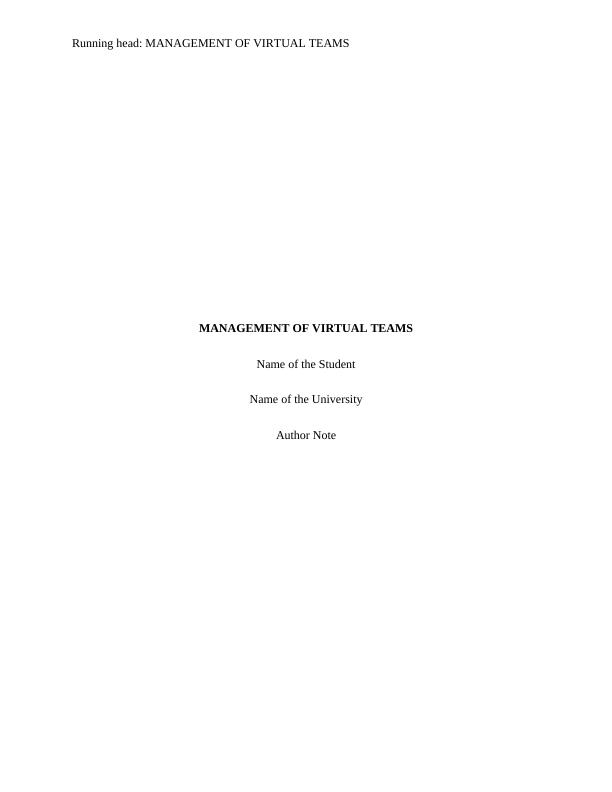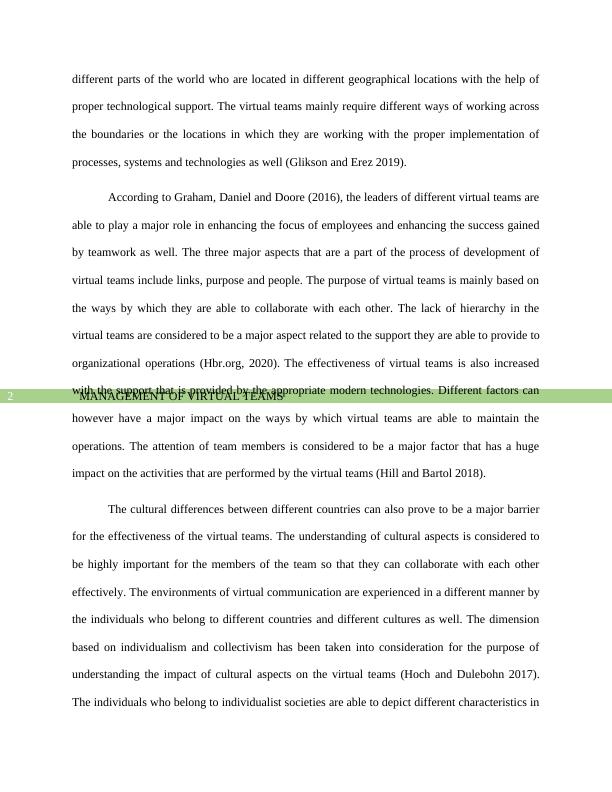Management of Virtual Teams Task
As part of the formal assessment for the programme, you are required to submit an International Management presentation and essay. The assignment aims to assess your understanding of the role of culture in international business, knowledge of key organizational and national cultural characteristics, ability to manage a diverse global workforce, understanding of factors contributing to a globalized economy, and skills in working effectively as a member of a global virtual team.
Added on 2022-08-25
Management of Virtual Teams Task
As part of the formal assessment for the programme, you are required to submit an International Management presentation and essay. The assignment aims to assess your understanding of the role of culture in international business, knowledge of key organizational and national cultural characteristics, ability to manage a diverse global workforce, understanding of factors contributing to a globalized economy, and skills in working effectively as a member of a global virtual team.
Added on 2022-08-25
End of preview
Want to access all the pages? Upload your documents or become a member.




